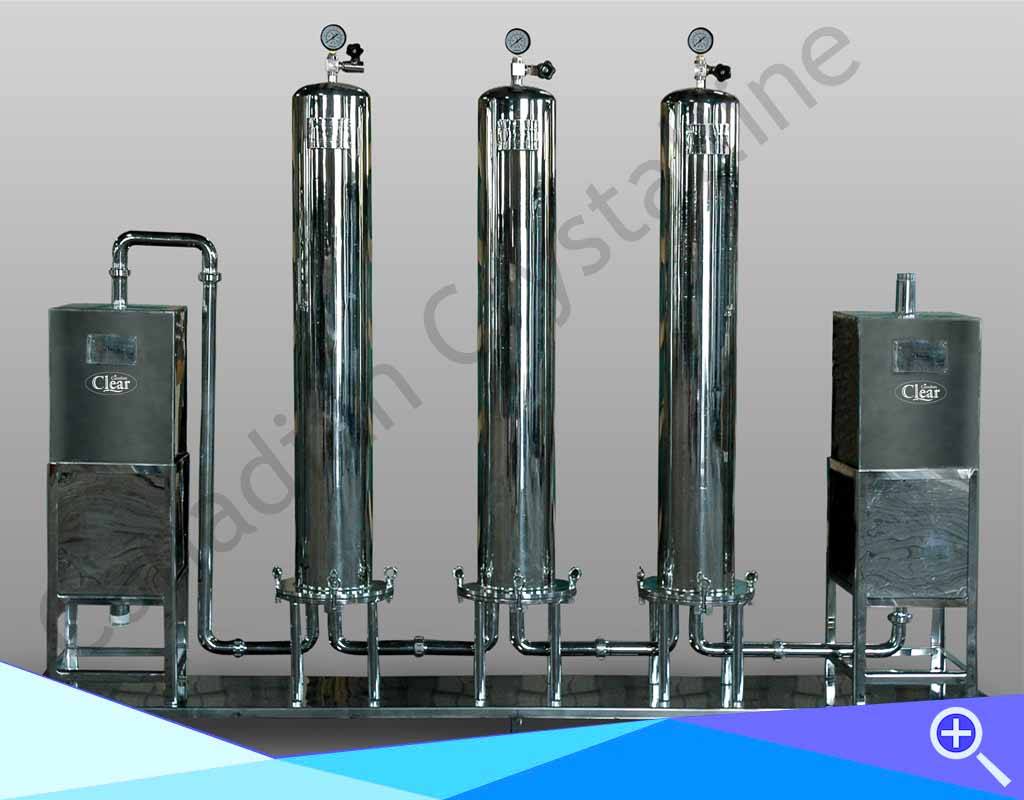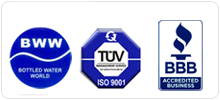Stainless Steel RO Plant - Mineral Water Treatment Plants
The consignment contains Water Purification System comprising of Filtration Plants and Machinery made out of Mild Steel and Stainless Steel Structural Material and Plates. The Machineries are used for treating the Salty Ground Water to potable Drinking Water purpose by Reverse Osmosis System using Polyamide Thin Film Membranes. The consignment also contain inter connecting piping materials for joining the Filtration Plants and Machineries used for treating the water.
Water Sources and Water Treatment
Drinking water should be essentially free of disease-causing microbes, but often this is not the case.A large proportion of the world’s population drinks microbially contaminated water, especially in developing countries
Using the best possible source of water for potable water supply and protecting it from microbial and chemical contamination is the goal In many places an adequate supply of pristine water or water that can be protected from contamination is not available The burden of providing microbially safe drinking water supplies from contaminated natural waters rests upon water treatment processes The efficiency of removal or inactivation of enteric microbes and other pathogenic microbes in specific water treatment processes has been determined for some microbes but not others. The ability of water treatment processes and systems to reduce waterborne disease has been determined in epidemiological studiesWater Treatment Ability
The Canadian Clear water treatment plant continues to maintain a strong position in supporting its ability to provide a reliable supply of safe, clean drinking water to its community. Funding reserves are maintained in case of an operational emergency or unexpected major breakdown.Disinfection ability
Disinfection of the drinking water is ultimately achieved through two points of application – primary disinfection – dosed as water enters the clear well and secondary disinfection – dosed at the treated water discharge point. Both of these critical treatment processes have redundancy in the pumps as well as the dosage lines. It should be noted that many other factors contribute to the overall disinfection process, including pre-treatment, coagulation and pH control. Varying raw water conditions require operators to adjust and control chemical dosages to meet regulations in a cost effective manner. Of most importance is the daily CT calculation. The CT value is the product of the concentration of a disinfectant and the contact time with the water being disinfected.
As mentioned in previous reports the proximity and position of the sodium hypochlorite and coagulant tanks is a potential safety hazard. Accidental contact between the two chemicals produces a highly exothermic reaction releasing chlorine gas. The building analysis of 2011 reviewed chemical storage at the plant and determined that long-term safe chemical handling should be addressed. Tender No. PS-13-10 was circulated in November 2013 and listed the safety concerns that need to be addressed in the chemical room. Some ventilation issues were addressed, however, separated chemical storage was not. Spill containment was installed in the acid room in 2013. This item has been noted on the annual MOE Inspection reports for many years and continues to be an area of concern, especially as ‘unmanned’ automated operations are on the horizon.
Chlorine Dioxide use
Chlorine dioxide continues to be generated seasonally on site and plays an important role in achieving disinfection while mitigating the formation of chlorine disinfection. These disinfection by-products are suspected carcinogens and are commonly formed when high doses of chlorine gas or sodium hypochlorite react with raw water heavily laden with organic matter. Chlorine dioxide use is uncommon among water treatment facilities due to chemical cost however the advantage of a “cleaner” disinfection process with less by-product formation is worth the extra cost during extreme seasonal water quality.
WATER TREATMENT PROCESS
A Water Treatment Plant aims to ensure that water is: Safe for human consumptionPleasant to consumers Provided at a reasonable cost
Water Treatment Plants have many processes and steps before a household turns on their tap and receives water. From the dam to the tap there is a vigorous process with many steps that are all essential in assuring high quality water for drinking.
This activity looks at two of these processes; it will help you understand the processes of coagulation, flocculation and filtration which are all steps in water treatment.































 Toll Free
Toll Free
